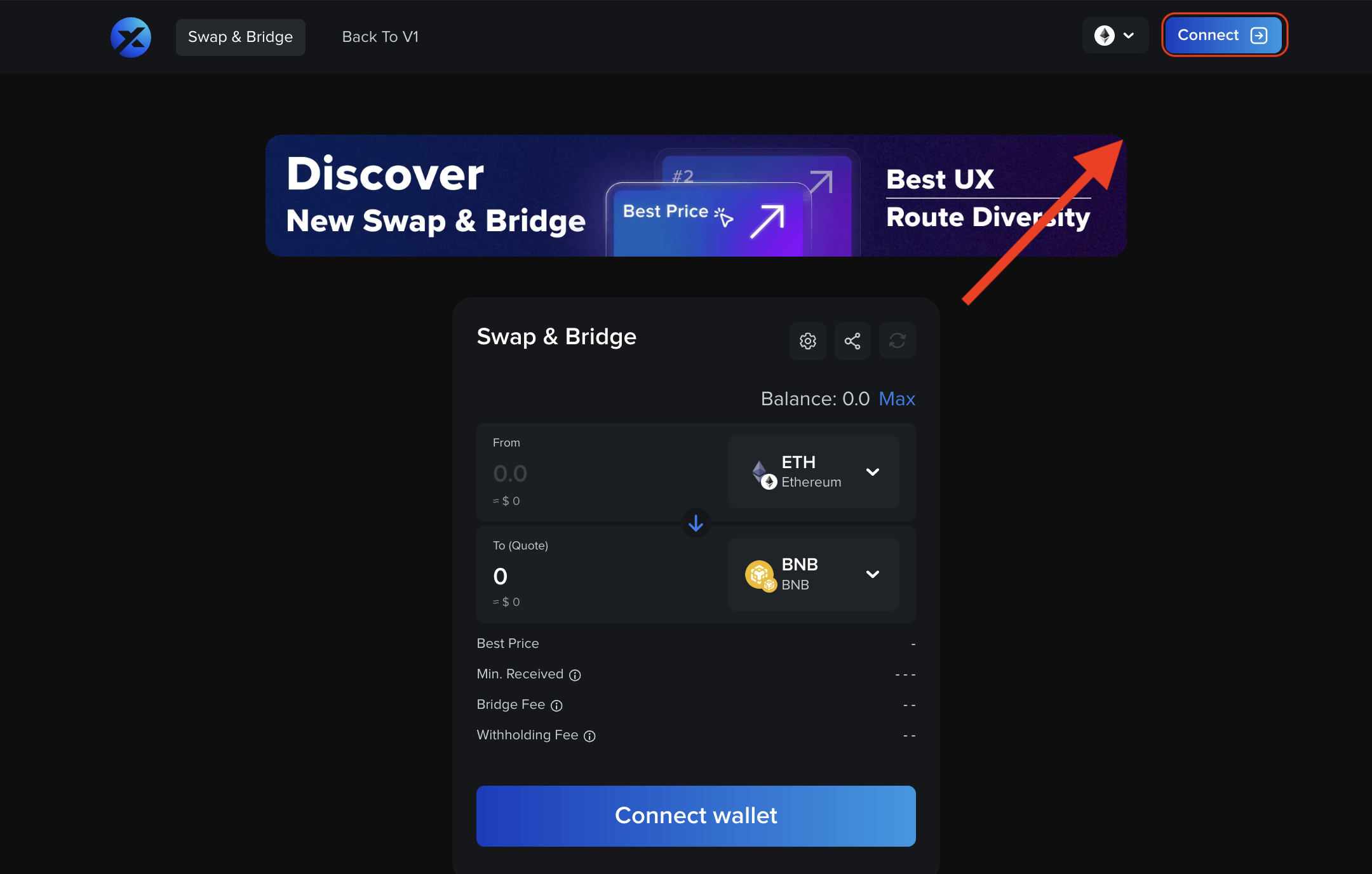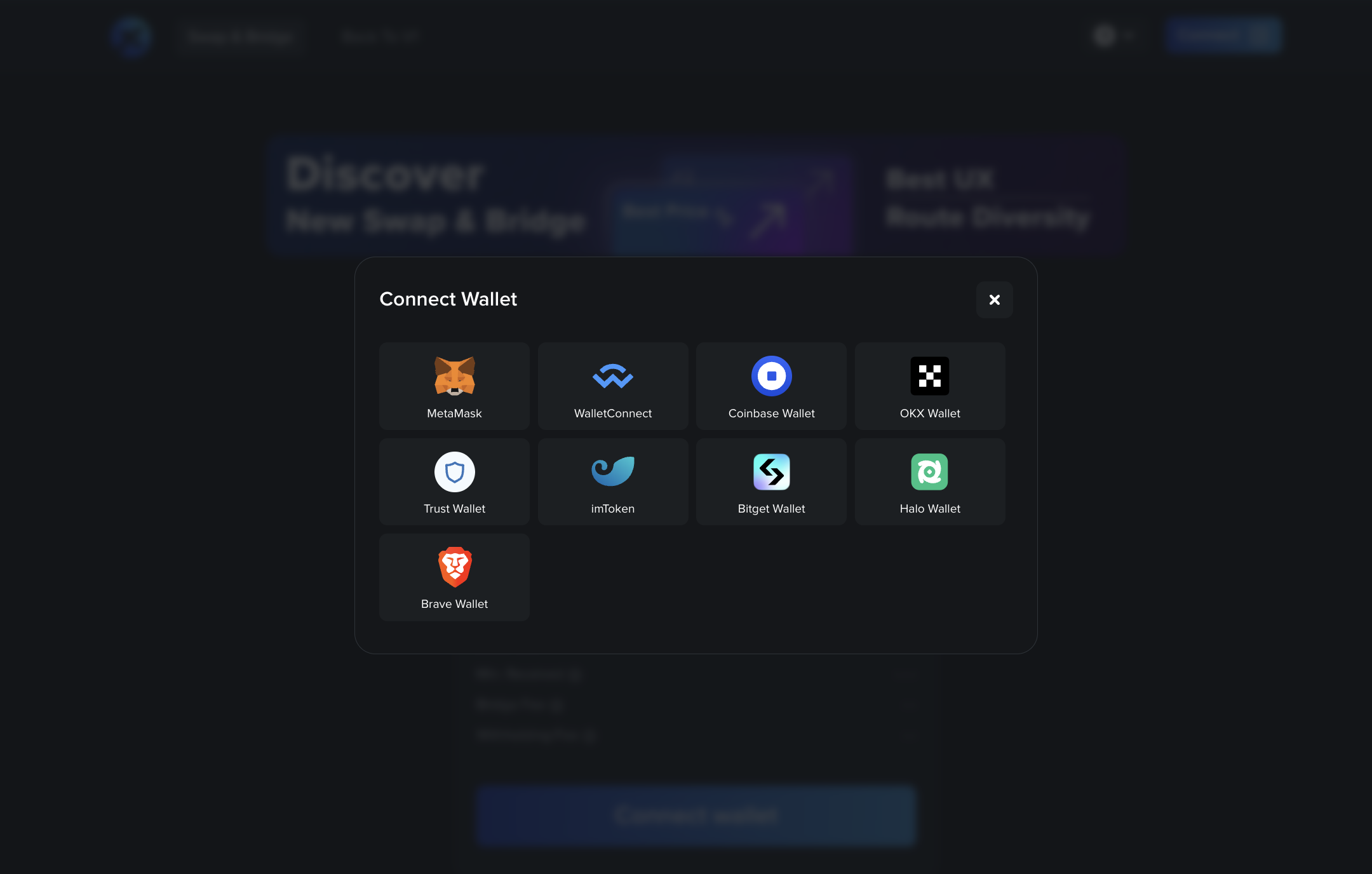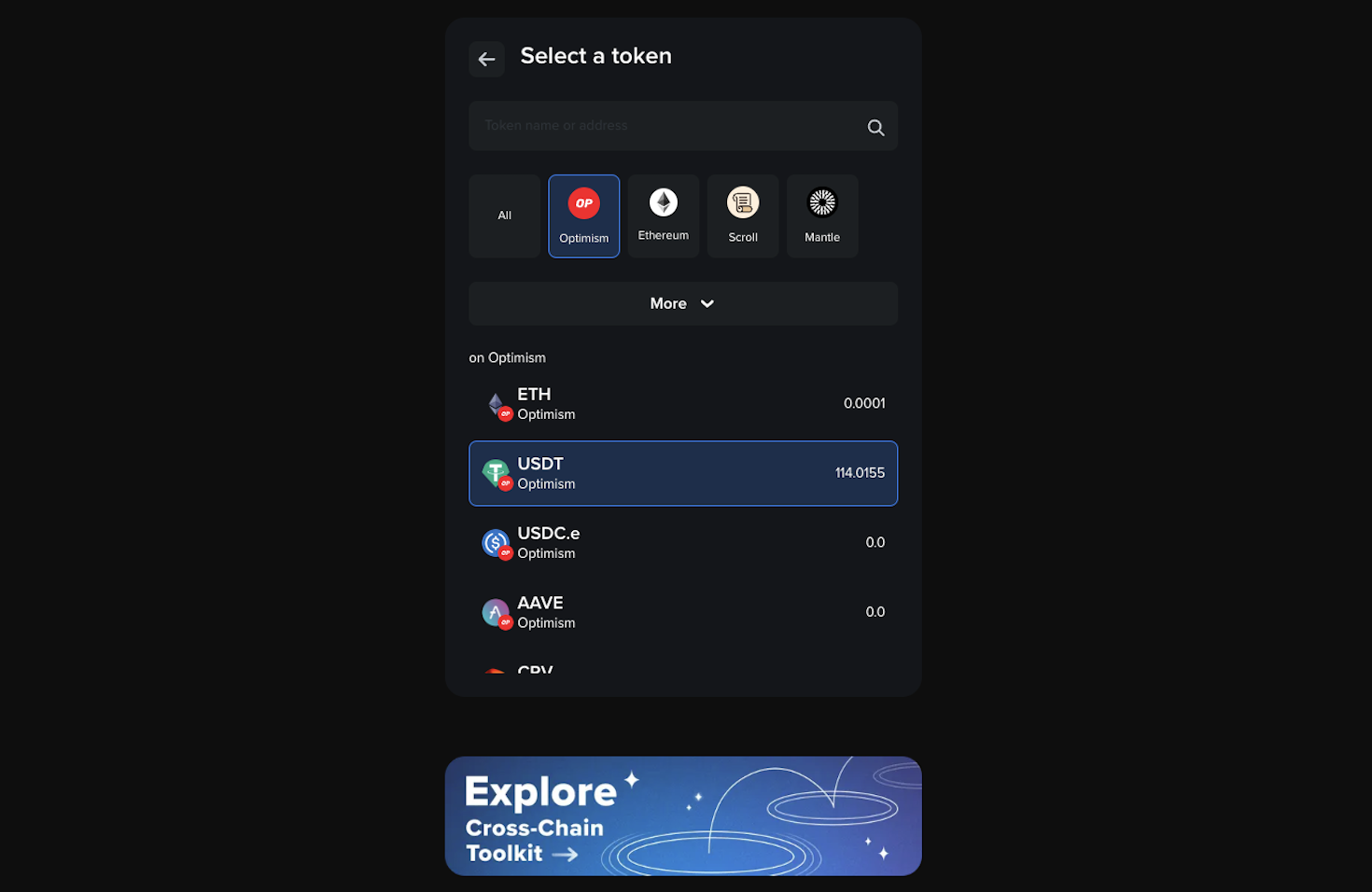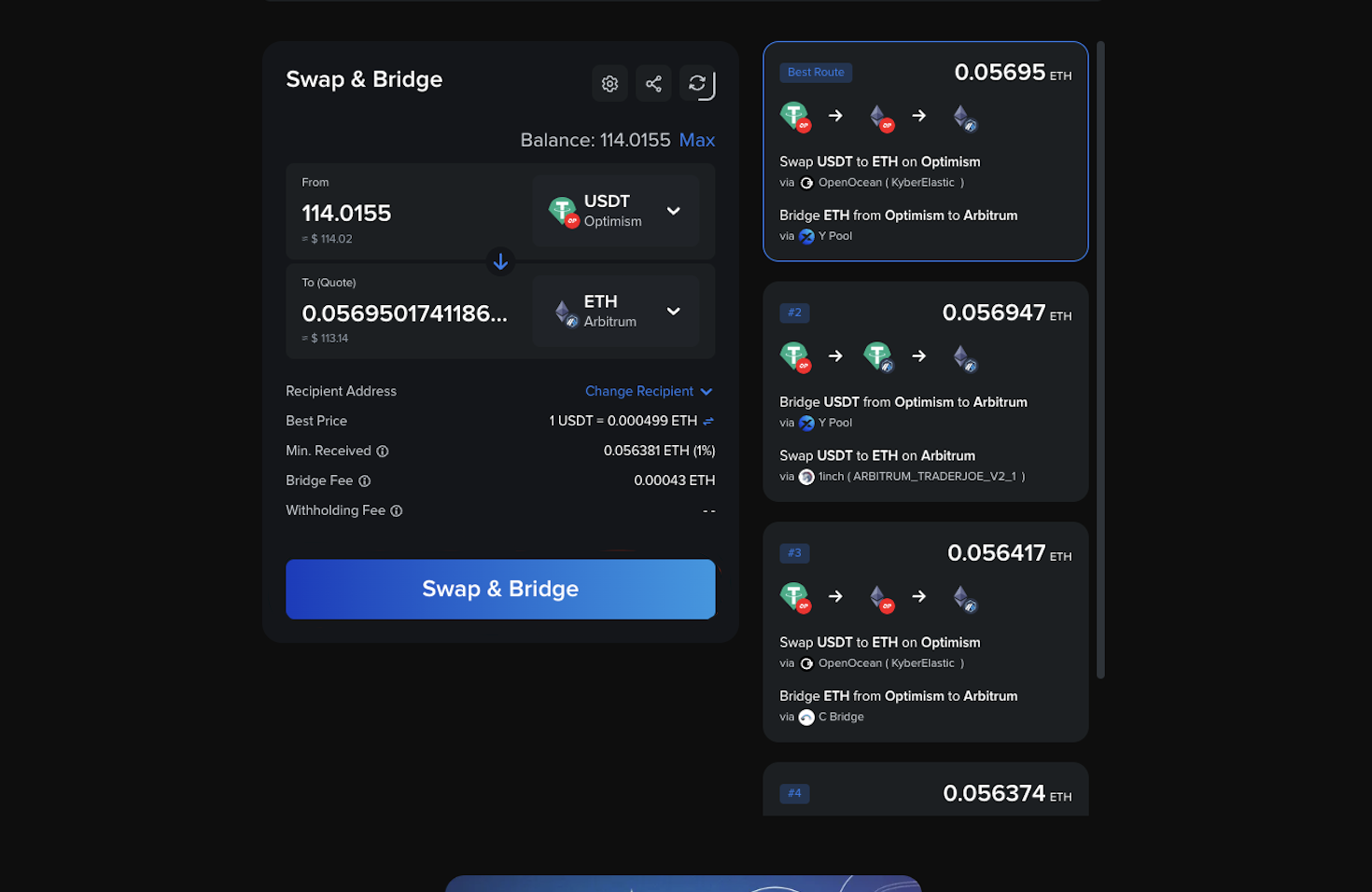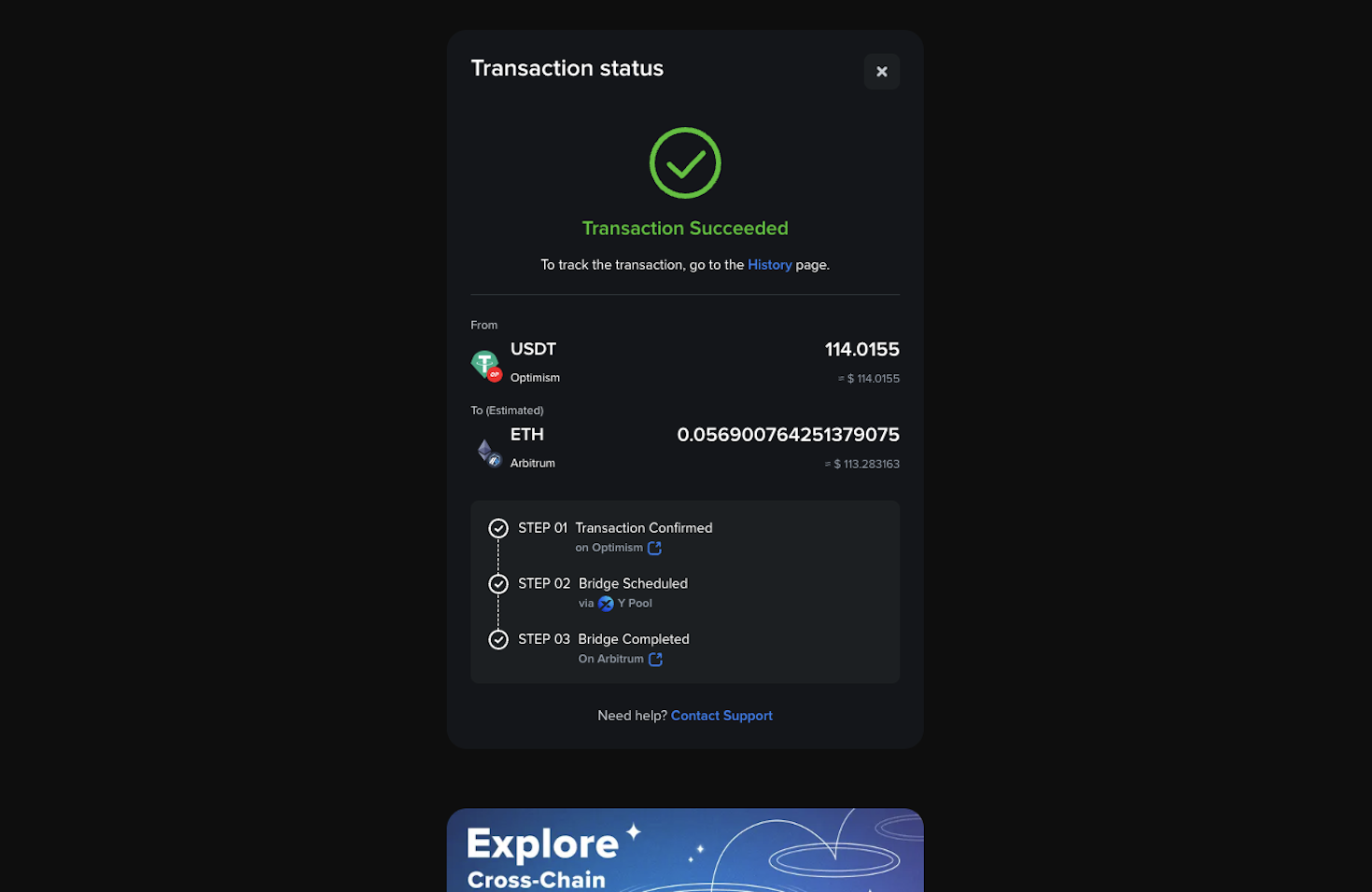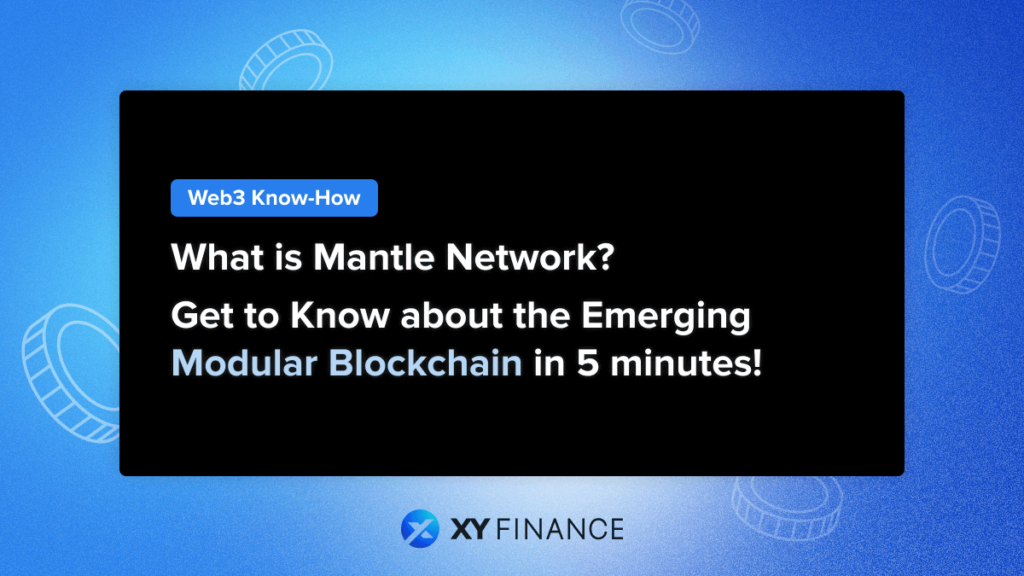
BitDAO, one of the wealthiest DAOs in the blockchain industry, developed the first Ethereum modular Layer 2 solution, Mantle, last year. This article will provide you with a comprehensive understanding of Mantle’s features and benefits, and guide you step-by-step into the Mantle ecosystem!
What is Mantle Network?
Mantle Network (Mantle) is the first modular Layer 2 (L2) solution built on Ethereum. Leveraging Optimistic Rollups technology, it allows transactions to be bundled and processed off-chain, significantly boosting Mantle’s throughput at a reduced cost.
Additionally, Mantle is Ethereum Virtual Machine (EVM) compatible, enabling existing Ethereum Dapps to be rapidly deployed on Mantle, substantially lowering development costs.
What is the relationship between Mantle, BitDAO and Bybit?
Mantle’s relationship with BitDAO and Bybit is deeply intertwined. Here’s an overview of the connections:
- Bybit: A leading centralized cryptocurrency exchange renowned for its global ranking in derivatives trading volume. Bybit is an early investor and partner of the Mantle Network.
- BitDAO: Initiated by Bybit, supported by major investors such as Peter Thiel, Pantera Capital, and Dragonfly Capital. BitDAO Treasury has assets valued at over $2 billion, making it one of the largest DAOs in the market.
- Mantle: Developed by BitDAO, Mantle merged with the BitDAO ecosystem in May last year.
With the merger of Mantle and BitDAO, a unified ecosystem was created under one brand and token. This means Mantle ($MNT) and BitDAO ($BIT) tokens were automatically converted at a 1:1 ratio to $MNT.
Additionally, Mantle developers inherited substantial resources, including nearly $300 million in stablecoin reserves and over 270,000 ETH from BitDAO. This financial backing ensures that Mantle has ample funds for future expansion and can attract developers through its ecosystem reward program.
What is the modular blockchain?
Mantle distinguishes itself in the blockchain sphere with its innovative modular approach, combining Optimistic rollups with a dedicated data availability layer. This design diverges from most traditional blockchains that consolidate all four core functions within a single network layer. It also differs from traditional Optimistic Rollups like Optimism or Arbitrum, where the rollup is responsible for the execution function, and the Ethereum mainnet handles the remaining functions.
In more specific terms, Mantle is responsible for the transaction execution function, while the Ethereum mainnet handles the consensus and settlement functions. As for the crucial data availability function, Mantle employs EigenLayer’s EigenDA solution, enabling nodes to provide efficient data availability services within the Mantle Network.
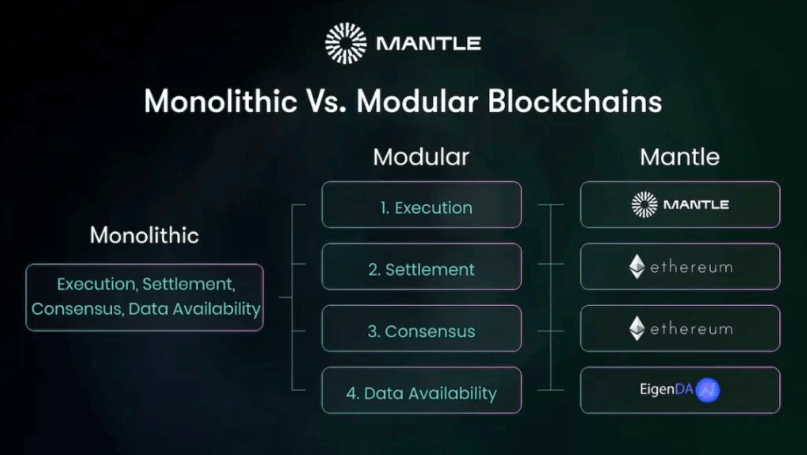
Utilizing its modular architecture, Mantle efficiently distributes these key processes across multiple layers, thereby enhancing both performance and scalability.
Evaluating Mantle: A Major Ethereum Scaling Solution?
Within the dynamic landscape of Layer 2 blockchain technologies, Mantle stands out with its unique features and inherent challenges. This exploration will highlight what sets Mantle apart, examining both its strengths and weaknesses to better understand its impact on the blockchain ecosystem.
Mantle’s Pros
- Seamless Migration: Thanks to bytecode-level compatibility, existing Ethereum applications can easily transition to Mantle without any major modifications.
- Affordable Transactions: Operating on Mantle is cost-efficient, with transactions typically costing only a fraction of those on the Ethereum mainnet.
- Unique Modular Design: Mantle’s modular architecture is a standout feature in the Ethereum L2 space, making it easier to enhance network performance and scalability.
- Strong Financial Backing: Supported by BitDAO’s substantial funding, Mantle enjoys a secure financial foundation for future growth. Promising Mantle Dapps may also receive funding from the Mantle EcoFund.
- Access to a Broad User Base: Mantle’s close relationship with Bybit positions it to potentially redirect users from the exchange to the Mantle ecosystem, potentially boosting its user base.
Mantle’s Cons
- Intense Competition: The Layer-2 sector is fiercely competitive, with networks like Arbitrum and Optimism contending for dominance. Mantle must navigate this crowded field to establish its presence.
- Concerns of Centralization: Though Mantle is a BitDAO creation, its close association with Bybit raises concerns within the crypto community about potential centralization.
- No Token Airdrop: Unlike many emerging L2 solutions that incentivize early adoption with token airdrops, Mantle already has its native token, MNT. This means new users might not benefit from a token airdrop, a common strategy to attract users to new L2.
Overall, despite Mantle’s later entry into the Layer-2 space, its unique architecture as an optimistic rollup indeed opens new possibilities for the future development of L2 solutions. Moreover, with the backing of BitDAO and Bybit, if Mantle continues to implement user-attractive market strategies, it has the potential for rapid growth in the optimistic rollup space. This momentum could position Mantle as one of the mainstream Ethereum scaling solutions.
Comparative Analysis of L2 Solutions: Mantle vs others
According to L2BEAT data, Mantle ranks 7th in TVL among all L2s. While this ranking isn’t particularly high, for a L2 network that has only been operational for half a year, achieving such impressive performance metrics is indeed commendable.
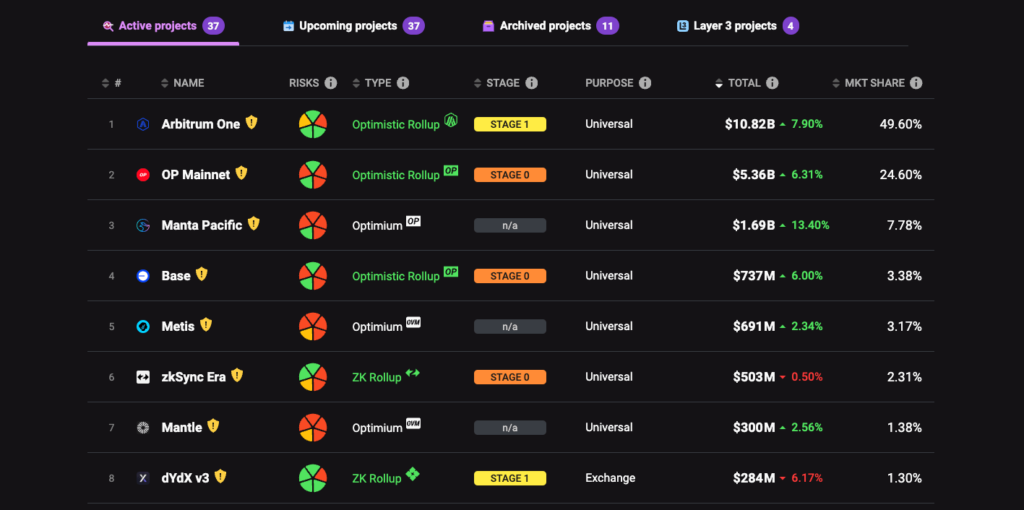
Further comparisons of Mantle with other mainstream L2 solutions reveal that Mantle ranks at the lower end in terms of TVL and Total Unique Addresses, showing a significant gap in data compared to mainstream L2s.
However, despite having a smaller user base, Mantle demonstrates impressive performance in Daily TPS and 30-Day Transaction Amount. This indicates that Mantle’s users are relatively active and engage in transactions more frequently.
| Feature | Mantle | Arbitrum | Optimism | zkSync Era | Base | Linea |
| Rollup Type | OP-Rollup | OP-Rollup | OP-Rollup | ZK-Rollup | ZK-Rollup | ZK-Rollup |
| TVL | 300M | 10.8B | 5.36B | 503M | 737M | 184M |
| Daily TPS | 3.24 | 9.75 | 3.84 | 14.32 | 3.24 | 1.68 |
| 30 Day TX Amount | 14.85M | 28M | 10.8M | 42.1M | 9.35M | 6.88M |
| Total Unique Address | 1.8M | 17M | 108M | 2.2M | 62M | 2.6M |
Ecosystem on Mantle
Since its debut in July 2023, the Mantle ecosystem has seen rapid expansion. We’ve handpicked an array of notable projects for your exploration, highlighting key developments and promising applications.
Dex – Agni Finance
Agni Finance is a high-capital efficiency, AMM-based DEX and launchpad built to support the Mantle Network ecosystem. Users are able to trade mainstream tokens of Mantle on it, and earn Swap fees by providing liquidity.
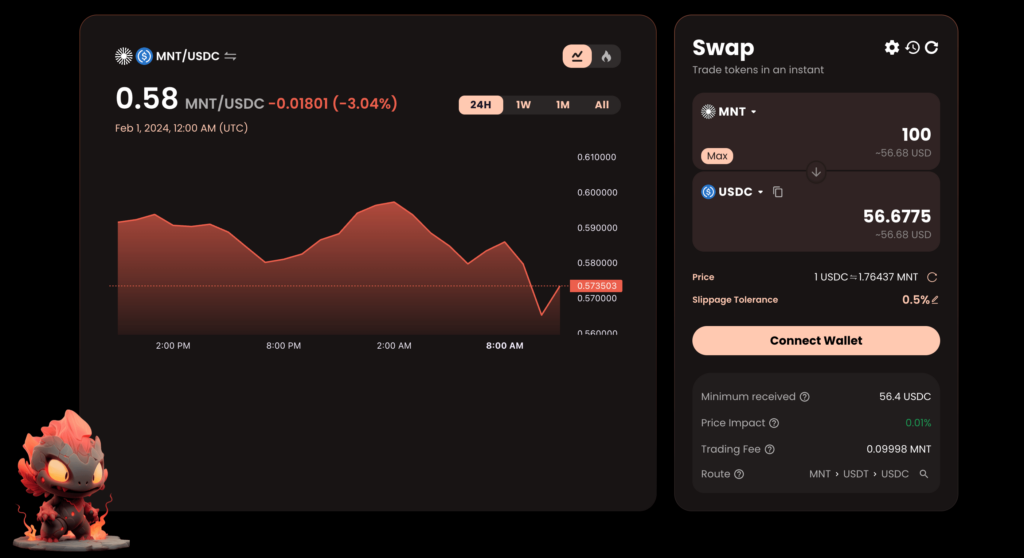
Lending – INIT Capital
INIT Capital is a decentralized, non-custodial lending protocol. Users can deposit their assets, use them as collateral and borrow against them.
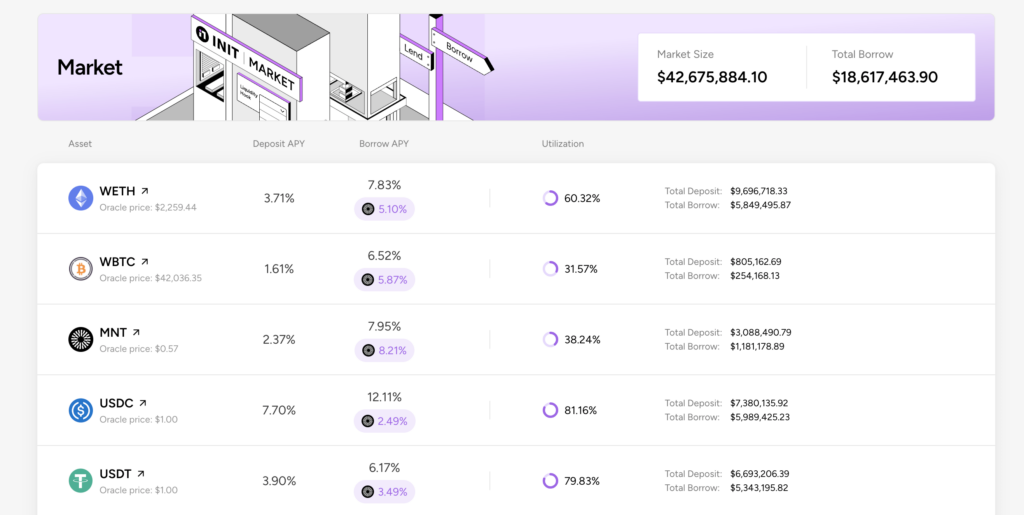
Derivatives – KTX.Finance
KTX.Finance is a derivatives exchange that users can trade and earn tokens with lowest fees, depthless liquidity, and up to 50x leverage on Mantle.
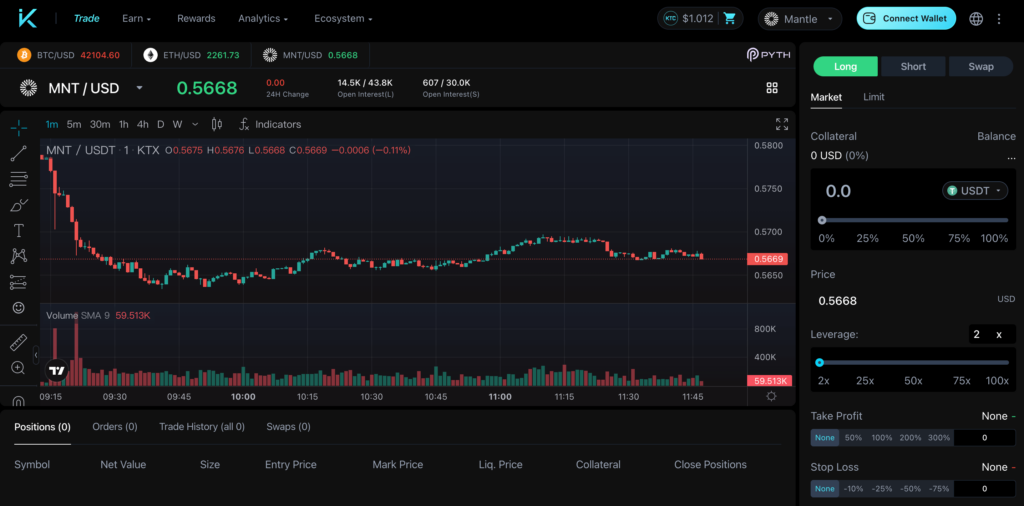
RWA – Ondo Finance
Ondo Finance is a RWA protocol that builds financial infrastructure to improve market efficiency, transparency, and accessibility. By offering stablecoins, it gives users liquid exposure to an ETF comprising short-term U.S. Treasuries.
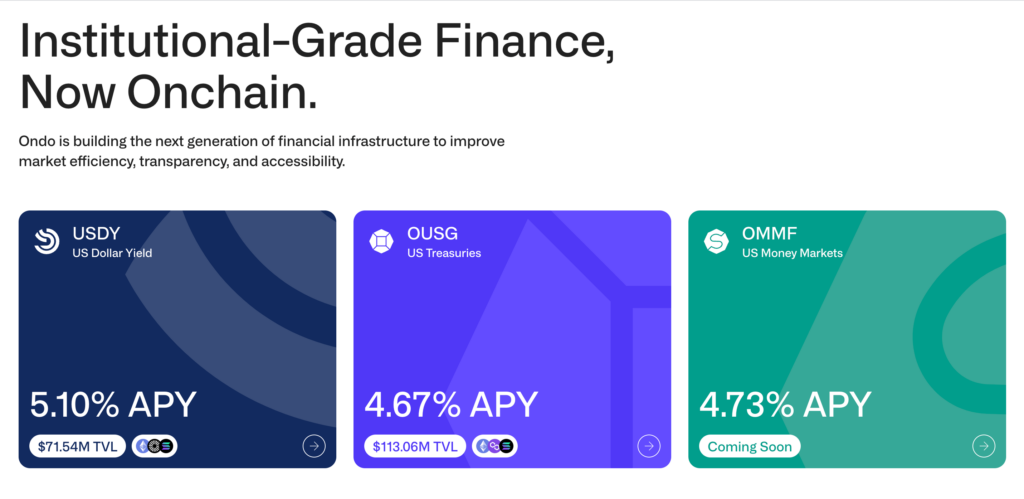
Tool – Mantle Name Service
Mantle Name Service is the first omnichain naming service on Mantle, allowing users to secure unique domain across all blockchains by registering a name.
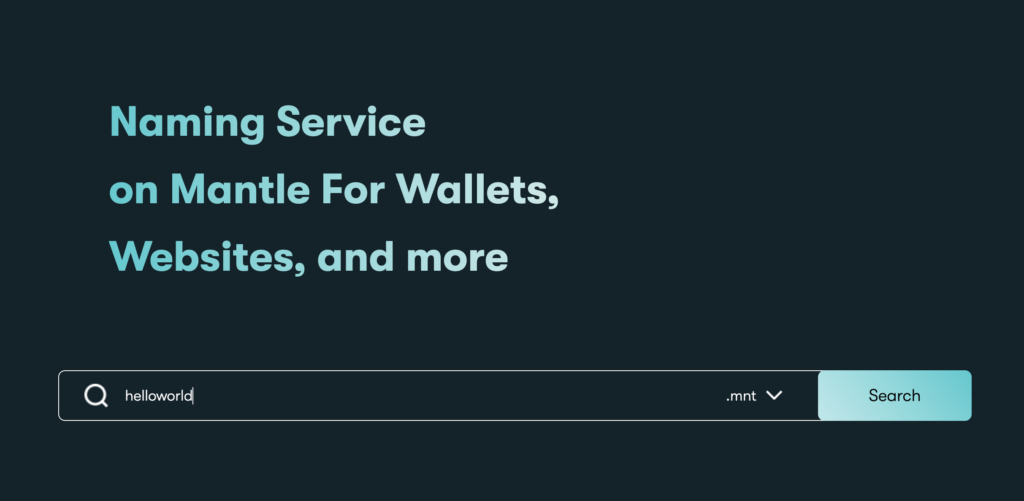
In addition to the protocols highlighted, Mantle’s ecosystem includes a wide range of other protocols available for user exploration, all accessible via the official Mantle ecosystem website.
How to bridge to Mantle?
Once familiar with Mantle and its vibrant ecosystem, you’re ready to bridge your assets and embark on your adventure!
Bridging to Mantle is a breeze, especially when utilizing XY Finance, known for its exceptional multi-chain routing capabilities. This allows for seamless and extensive swapping options with just a single click.
In contrast to Mantle’s native bridge, which limits cross-chain transactions to ETH and Mantle, XY Finance offers a more user-friendly and efficient alternative.
(Fully understand XY Finance: What is XY Finance? The cheapest cross-chain bridge aggregator that operates on 20 EVM chains)
Don’t waste your time! You can now bridge tokens to Mantle with this simple guide:
- Visit XY Finance and connect your Wallet.
- Select the network you want to transfer tokens from (Ethereum, Polygon, Arbitrum, Avalanche, Optimism + 15 others).
- Select the token you want to bridge from your network to Mantle and input the amount.
- Review and confirm the transaction. Your tokens will arrive in under 5 minutes.
(Encountering any problems while bridging? Check out our comprehensive tutorial.)
You’re all prepared! Hit the button and begin your exploration of the Mantle universe!
About XY Finance
XY Finance is a cross-chain interoperability protocol aggregating DEXs & Bridges. With the ultimate routing across multi-chains, borderless and seamless swapping is just one click away.
XY Finance Official Channels
XY Finance | Discord | Twitter | Telegram | Documents | Partnership Form

